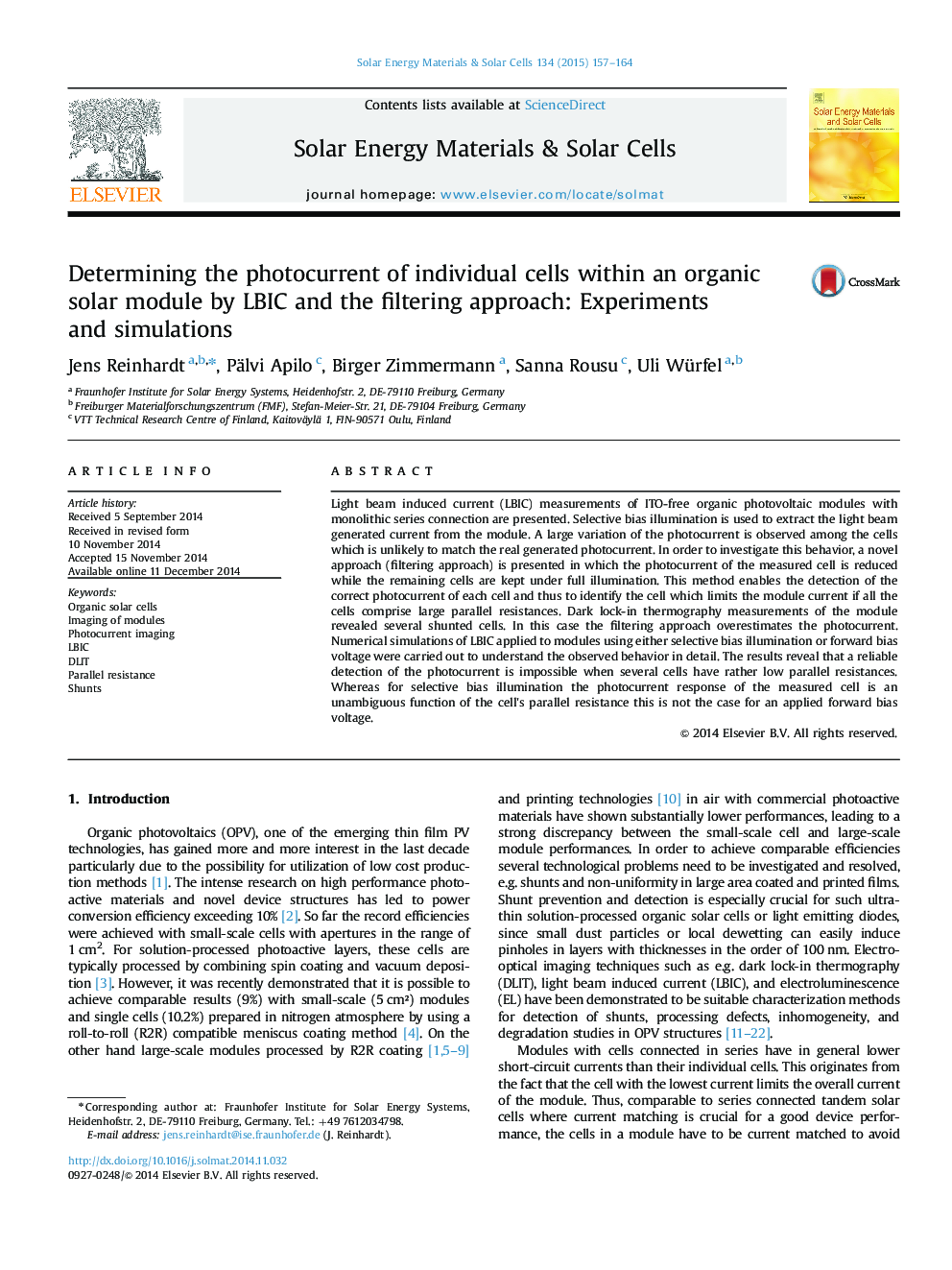| Article ID | Journal | Published Year | Pages | File Type |
|---|---|---|---|---|
| 77903 | Solar Energy Materials and Solar Cells | 2015 | 8 Pages |
•LBIC on organic solar modules using selective bias lighting was performed.•A new approach to characterize the photocurrents in modules is presented.•The impact of the parallel resistance on LBIC results is investigated by means of numerical simulations.•The LBIC EQE depends highly on the parallel resistances in the module.
Light beam induced current (LBIC) measurements of ITO-free organic photovoltaic modules with monolithic series connection are presented. Selective bias illumination is used to extract the light beam generated current from the module. A large variation of the photocurrent is observed among the cells which is unlikely to match the real generated photocurrent. In order to investigate this behavior, a novel approach (filtering approach) is presented in which the photocurrent of the measured cell is reduced while the remaining cells are kept under full illumination. This method enables the detection of the correct photocurrent of each cell and thus to identify the cell which limits the module current if all the cells comprise large parallel resistances. Dark lock-in thermography measurements of the module revealed several shunted cells. In this case the filtering approach overestimates the photocurrent. Numerical simulations of LBIC applied to modules using either selective bias illumination or forward bias voltage were carried out to understand the observed behavior in detail. The results reveal that a reliable detection of the photocurrent is impossible when several cells have rather low parallel resistances. Whereas for selective bias illumination the photocurrent response of the measured cell is an unambiguous function of the cell׳s parallel resistance this is not the case for an applied forward bias voltage.
